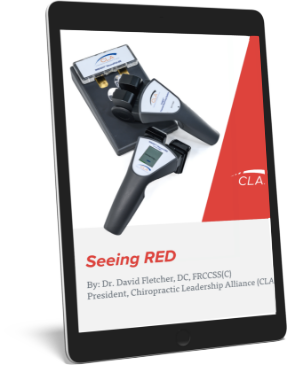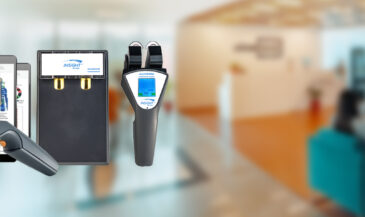By Dr. Christopher Kent
The scope of principled chiropractic is limited only by the scope of influence of the nervous system. Research and clinical observation join in producing a compelling case for subluxation screening of newborns, and prompt adjustment when subluxations are found.
Schneier and Burns recently published the results of a triple blind study titled, “Atlanto-occipital hypermobility in sudden infant death syndrome,” in Vol. 7 No. 12 of The Journal of Chiropractic Research and Clinical Investigation.[1] These authors described the phenomenon of “atlas inversion” where the posterior arch of C-1 enters the foramen magnum. They further stated, “Relative measurements suggested that a correlation existed between instability in the atlanto-occipital articulation and sudden infant death syndrome.” Instability, of course, is a manifestation of the vertebral subluxation complex.
These findings corroborate those of Gilles, Bina and Sotrel in their paper, “Infantile atlanto-occipital instability.”[2] These investigators studied 17 infant cadavers. 11 were SIDS cases and six were non-SIDS cases. Ten of the 17 cases demonstrated atlas inversion, and all 10 cases were in the SIDS group.
These authors also suggested that atlanto-occipital instability may be a factor in other conditions. They stated, “At this early stage in the development of our notions about the potential contribution of atlanto-occipital instability to deaths in infants, it is very difficult to assess the role of this proposed mechanism in the death of an infant with a conventional disease. Thus, one might anticipate that the ‘controls’ will be contaminated by children who had a conventional disease, but whose death was, in fact, caused by this mechanism.”
Towbin addressed the clinical significance of spinal cord and brain stem injury at birth, noting that such damage is often latent and undiagnosed. [3]
According to Towbin, “Death of the fetus may occur during delivery or, with respiratory function depressed, a short period after birth. Infants who survive the initial effects may be left with severe nervous system defects. In some, the neurologic sequellae are attributable directly to the primary lesion in the cord or brain stem; in others, secondary cerebral damage results, a consequence of the imposed period of hypoxia at birth.”
Chesire described three cases of traumatic myelopathy in children without demonstrable vertebral trauma. [4] In this paper, the classical mechanism of trauma is said to be hyperextension of the cervical spine in a difficult breech delivery. Although tetraplegia may result, the x-rays are described as “usually normal.” Byers published an excellent review paper addressing spinal cord damage during the birth process. [5] Traction and rotational stresses applied to the spinal axis were listed as causes of spinal cord injury during birth.
The vagus nerve is involved in mechanisms associated with control of tidal volume, breathing rate, and respiratory reflexes. Sachis et al performed histological examinations of the vagus nerve in infants who died of SIDS and those who died of other conditions. [6] Significant differences were noted between the two groups. Several hypotheses were proposed by authors to explain the data, including damage to the vagus nerve resulting in delayed development.
Gutman described how “relational disturbance” between occiput and atlas can lead to “blocked atlantal nerve syndrome” in children and adults. [7] The author listed a variety of conditions which appear clinically related to this syndrome. Although SIDS was not discussed as an entity, the author stated that a brain stem component is a part of this syndrome. It was concluded that for those affected, “manual treatment” by a qualified practitioner is appropriate.
In her paper, “Physical stresses of childhood that could lead to need for chiropractic care,” presented at the first National Conference on Chiropractic and Pediatrics, McMullen stated: “Any condition that arises to change the normal birth process…frequently results in subluxation at the level of greatest stress. Severe subluxation resulting in nerve damage may be clinically obvious at birth (e.g. Bell’s, Erb’s and Klumpke’s palsies), however more frequently the trauma remains sub-clinical with symptoms arising at a later time. These symptoms include, but are not limited to, irritability, colic, failure-to-thrive syndromes, and those syndromes associated with lowered immune responses. These subluxations should be analyzed and corrected as soon as possible after birth to prevent these associated conditions.” [8]
Bonci and Wynne and Stiga published papers discussing the relationship between chiropractic theory and SIDS etiology. [9,10]
Banks et al stated, “Functional disturbances in the brainstem and cervical spinal cord areas related to the neurophysiology of respiration may contribute to the clinical factors associated with sudden infant death syndrome…Any process, whether genetic, biochemical, biomechanical or traumatic, that alters normal development of the respiratory control centers related to spinal constriction and compression following birth trauma may be contributory to sudden infant death syndrome.” [11]
In a recent issue of the Journal of the American Medical Association, former Surgeon General Joycelyn Elders noted that SIDS is the leading cause of mortality in the United States of infants aged one month to one year, with 5000 to 600 deaths being attributed to SIDS. In encouraging parents to have infants sleep on their backs, Elders states that SIDS infants exhibit “…a pattern of delayed development of cardiorespiratory and central nervous system structures.” However, Elders also notes that “…no specific diagnostic criteria, either when an infant is alive or after it has died, distinguish a SIDS infant from any other.” [12]
Every seasoned chiropractor who has adjusted infants knows the dramatic responses which often follow the correction of a subluxation. Chiropractic care for newborns is immensely rich in clinical promise. Besides the possible link between subluxation and SIDS, the lifelong health benefits which may follow adjustment shortly after birth should be the subject of additional research. As chiropractors, we have a public health responsibility to further explore the relationship between SIDS and subluxation.
References
1. Schneier M, Burns RE: “Atlanto-occipital hypermobility in sudden infant death syndrome.” The Journal of Chiropractic Research and Clinical Investigation. 1991;7(2):33.
2. Gilles FH, Bina M, Sotrel A: “Infantile atlanto-occipital instability.” Am J Dis Child 1979;133:30.
3. Towbin A: “Latent spinal cord and brain stem injury in newborn infants.” Develop Med Child Neurol 1969;11:54.
4. Chesire DJE: “The paediatric syndrome of traumatic myelopathy without demonstrable vertebral injury.” Paraplegia 1977-78;15:74.
5. Byers RK: “Spinal-cord injuries during birth.” Develop Med Child Neurol 1975 17(1):103.
6. Sachis PN, Armstrong DL, Becker LE, Bryan AC: “The vagus nerve and sudden infant death syndrome: a morphometric study.” J Pediatrics 1981 98(2):278.
7. Gutman G: “Blocked atlantal nerve syndrome in infants and small children.” Originally published in “Manuelle Medizin,” Springer-Verlag, 1987. English translation published in International Review of Chiropractic 1990 46(4):37.
8. McMullen M: “Physical stresses of childhood that could lead to need for chiropractic care.” Proceedings of the National Conference on Chiropractic and Pediatrics. Arlington, VA: International Chiropractors Association, 1991.
9. Bonci A, Wynne C: “The interface between sudden infant death syndrome and chiropractic.” Journal of Chiropractic Research 1989;5(3):78.
10. Stiga J: “Sudden infant death syndrome.” American Chiropractor October 1983:28.
11. Banks B, Beck R, Columbus M, et al: “Sudden infant death syndrome: a literature review with chiropractic implications.” J Manip Physiol Ther 1987;10(5):246.
12. Elders JM: “Reducing the risk of sudden infant death syndrome.” JAMA 272(21):1646, 1994.





























































































